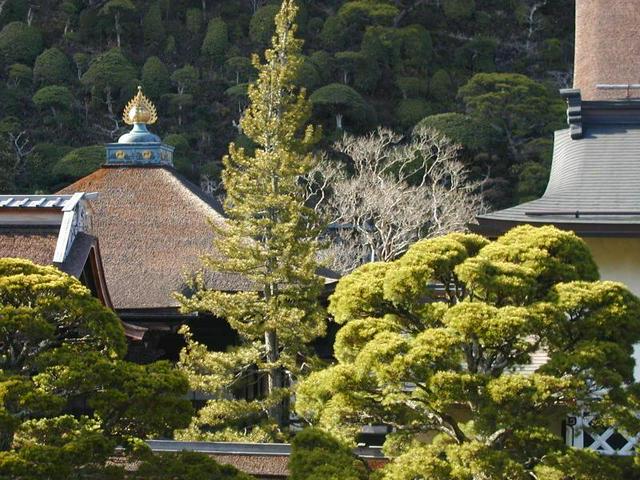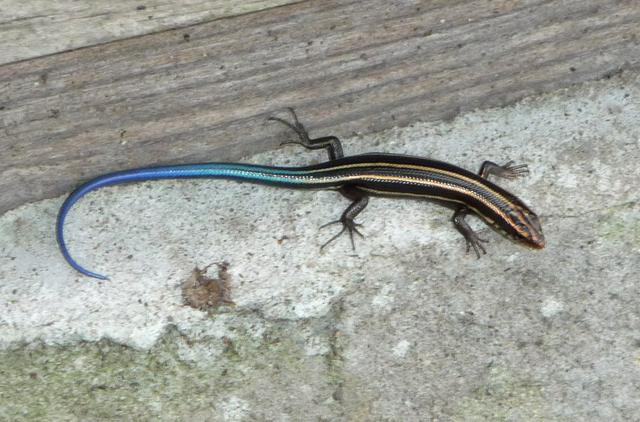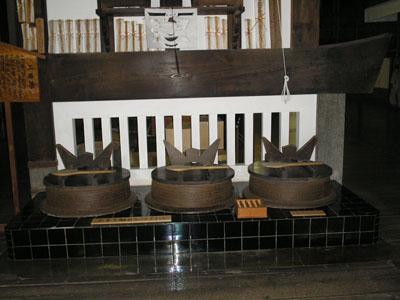
Mount Kōya (高野山 Kōya-san) is a mountain in Wakayama prefecture to the south of Osaka, Japan, primarily known as the headquarters of the Shingon sect of Japanese Buddhism.
First settled in 816 CE by the monk Kūkai as a retreat far away from the courtly intrigues of Kyoto, Mt. Koya is located in a 800-m-high valley amid the 8 peaks of the mountain. The original monastery has grown into the town of Koya, featuring a university dedicated to religious studies and over 100 temples, many of which offer lodging to pilgrims.
In 2004, UNESCO designated Mt. Koya as part of a wider World Heritage Site.
If you stay in Osaka, you can consider visit mount Kōya on a day trip (leave early in the morning and allow the time to reach Osaka Namba station and buy your ticket). You can also spend the night in one of the numerous temples (see section "Sleep").
The Kōyasan Shukubō association has two information centers. Here you can rent excellent audioguides (¥500/person/day), including in English and French. They describes various sites including temples and tombs, and make the visit much more interesting.
- Centre office. 8AM-4:30PM.
- Ichi-no-hashi office. 8AM-4:30PM.
Centre office. 8AM-4:30PM.
Ichi-no-hashi office. 8AM-4:30PM.
The mountain is home to the following famous sites:
- Oku-no-In. The mausoleum of Kukai, lit by thousands of lanterns. According to tradition, the lights have been lit since Kukai's death over 1000 years ago.
- Graveyard. The mausoleum is surrounded by an atmospheric and immense graveyard, set among giant cedar trees with winding paths throughput. Among the 200,000 graves, a good number are several hundred years old. The audio guide will tell about the stories of its hosts so the walk does not look like only a long succession of graves. Also particularly interesting are the many fanciful gravestones, including giant spaceships and cups erected respectively by an astronautical and coffee company, and a monument erected by a pesticide company to commemorate all its insect victims. If it is mainly visited during the day, a small night walk is worth a shot if you spent the night in mount Koya: the atmosphere of this cobblestone path is different under the dim lights.
- Garan. It is a temple complex designed by Kukai on the western side of town. In its center is the Konpon Daitō (根本大塔) pagoda, which according to Shingon doctrine represents the central point of a mandala covering Mt. Koya and all of Japan.
- Kongōbu-ji. This temple is the sprawling yet atmospheric headquarters of the Shingon sect, with a stone garden that outclasses many of Kyoto's best. Entry ¥500, including a rice cracker and a cup of tea.
Most (if not all) sights close at 5PM, so there's only little to do in the evening unless you are staying in a temple.
Oku-no-In. The mausoleum of Kukai, lit by thousands of lanterns. According to tradition, the lights have been lit since Kukai's death over 1000 years ago.
Graveyard. The mausoleum is surrounded by an atmospheric and immense graveyard, set among giant cedar trees with winding paths throughput. Among the 200,000 graves, a good number are several hundred years old. The audio guide will tell about the stories of its hosts so the walk does not look like only a long succession of graves. Also particularly interesting are the many fanciful gravestones, including giant spaceships and cups erected respectively by an astronautical and coffee company, and a monument erected by a pesticide company to commemorate all its insect victims. If it is mainly visited during the day, a small night walk is worth a shot if you spent the night in mount Koya: the atmosphere of this cobblestone path is different under the dim lights.
Garan. It is a temple complex designed by Kukai on the western side of town. In its center is the Konpon Daitō (根本大塔) pagoda, which according to Shingon doctrine represents the central point of a mandala covering Mt. Koya and all of Japan.
Kongōbu-ji. This temple is the sprawling yet atmospheric headquarters of the Shingon sect, with a stone garden that outclasses many of Kyoto's best. Entry ¥500, including a rice cracker and a cup of tea.

Hiking around Mount Koya is a good option. Among many courses, there is one that starts at Daimon (大門、big gate), hiking up to a tiny shrine at the top of Bentengaku (弁天岳), and then down to Nyonindou (女人堂). Not a difficult hike, and should take only a couple of hours, depending on how often you stop on the way to take photos. You can encounter a few species of lizards and snakes along the way, such as jimuguri (ジムグリ, Japanese Forest Ratsnake), the Japanese five-lined skink, and the Japanese grass lizard. From the top you can see all the way south to Wakayama city and the ocean.
 All temple lodgings on Mt. Koya offer Shōjin ryōri (精進料理), purely vegetarian food intended for monks. People who equate vegetarian food with blandness will be surprised - in their hundreds of years of experience with vegetarian cooking, the monks have invented amazingly tasty dishes. A local specialty, Kōya-dōfu, is prepared by freeze-drying and then reconstituting tofu.
All temple lodgings on Mt. Koya offer Shōjin ryōri (精進料理), purely vegetarian food intended for monks. People who equate vegetarian food with blandness will be surprised - in their hundreds of years of experience with vegetarian cooking, the monks have invented amazingly tasty dishes. A local specialty, Kōya-dōfu, is prepared by freeze-drying and then reconstituting tofu.
- Hanabishi (花菱), next to the east Senjuinbashi (千手院橋) bus stop, tel. 0736-56-2236. This classy restaurant has been serving customers for over 120 years and is a good option for sampling Buddhist vegetarian fare if you're not staying overnight. A shōjin ryōri lunch set runs ¥2100, while a full-on multi-course vegetarian kaiseki experience runs ¥5000-10,500 (cheaper at lunch). Some of the Bento sets are not vegetarian, so stick with shōjin ryōri for the "real thing".
For those unwilling to eat vegetarian, a number of restaurants offer regular Japanese and Chinese cuisine. There are also many reasonably priced izakaya around the center of town that offer a range of many traditional Japanese pub foods.
- Ima-chan. A fresh fish based pub on the left hand side of the road on the way to Nyonindo from town, just past the Mausoleum of the Tokugawas, prices range from ¥300-1500 and much of the menu is based on the time of year. English menu not available.
- Inoue Diagonally across from the CoCo convenience store. Boasts the largest Om-Rice (omelette filled with rice and some meat) in Japan, ¥550. English menu available.
- Miyasan. Centrally located in the middle of Koyasan, just South of the main traffic lights, it has a menu of about 50 items ranging from ¥200-1000. The inn's banner states that its specialty is fried chicken, although all the items are of high quality. The Ramen is particularly filling. English Menu available.
- International Cafe (Bon An Sha). Located on the left hand side of the main road as one walks from the centre of town to Okunoin cemetery, 150m from the main traffic lights, this cafe and art gallery specialises in organic vegetarian lunches (price varies depending on contents of set. ¥800-1200). The menu changes daily, and a number of homemade cakes are available, as are coffees and teas (¥300). The couple who run the cafe are collectively native speakers of French, English and Japanese and also fluent in Italian and Mandarin Chinese.
Hanabishi (花菱), next to the east Senjuinbashi (千手院橋) bus stop, tel. 0736-56-2236. This classy restaurant has been serving customers for over 120 years and is a good option for sampling Buddhist vegetarian fare if you're not staying overnight. A shōjin ryōri lunch set runs ¥2100, while a full-on multi-course vegetarian kaiseki experience runs ¥5000-10,500 (cheaper at lunch). Some of the Bento sets are not vegetarian, so stick with shōjin ryōri for the "real thing".
Ima-chan. A fresh fish based pub on the left hand side of the road on the way to Nyonindo from town, just past the Mausoleum of the Tokugawas, prices range from ¥300-1500 and much of the menu is based on the time of year. English menu not available.
Inoue Diagonally across from the CoCo convenience store. Boasts the largest Om-Rice (omelette filled with rice and some meat) in Japan, ¥550. English menu available.
Miyasan. Centrally located in the middle of Koyasan, just South of the main traffic lights, it has a menu of about 50 items ranging from ¥200-1000. The inn's banner states that its specialty is fried chicken, although all the items are of high quality. The Ramen is particularly filling. English Menu available.
International Cafe (Bon An Sha). Located on the left hand side of the main road as one walks from the centre of town to Okunoin cemetery, 150m from the main traffic lights, this cafe and art gallery specialises in organic vegetarian lunches (price varies depending on contents of set. ¥800-1200). The menu changes daily, and a number of homemade cakes are available, as are coffees and teas (¥300). The couple who run the cafe are collectively native speakers of French, English and Japanese and also fluent in Italian and Mandarin Chinese.
If choosing to take the hike up from Kudoyama, in addition to the regular hiking precautions, consider that roughly 1 km of the course runs directly beside a golf course. In addition to stray balls (wear a hat), it seems the owner may be fighting an insane one-sided border dispute because, as of June 2010, around where the trail doubles as an access road, somebody has installed a couple of electrified tripwires over the trail, which appear to be hooked up to the golf links. Be aware.
An otherwise complete set of localised advisories can be found on the English or Japanese hiking maps available at the temple at the very start of the course.
Many of the pilgrims visiting Mount Koya are on their way to start the 88 Temple Pilgrimage on the island of Shikoku.
Not far outside Koya, approx. 15 min by car, is Otaki, a small town aptly named for the large waterfalls at its entrance. Once past Okunoin, take the Ryujin Skyline towards Shirahama and look for a small sign about 15 min down the road. The entrance should be on the right. Take the small road downward for about 2 minutes and the 2 large waterfalls should be visible from the road. It is an especially nice place to stop and have a picnic before leaving Koya.
